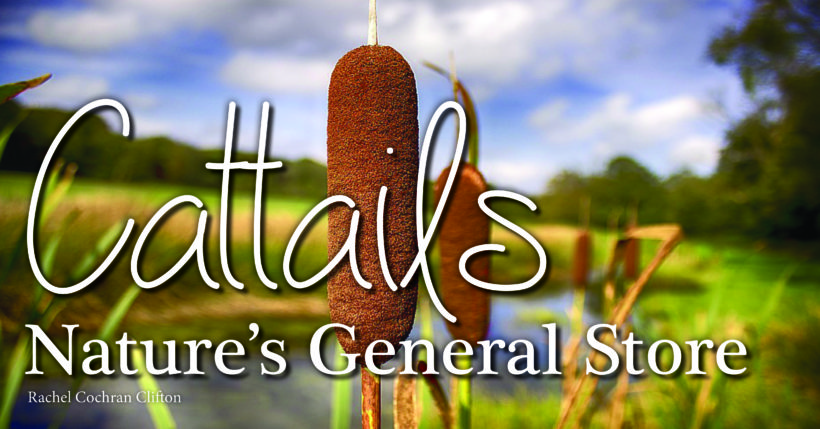When I was little and growing up on my grandparents soybean and rice farms in Northern Clay County, I used to see the cattails growing along the ditches and sloughs and get so excited, “Granny there’s them corndog plants!” I would say. In my mind they looked just like corndogs so naturally that’s what I called them. I remember clearly looking at them and thinking I should be able to eat them! “Those are just cattails Rachel Ann, they aren’t for lunch.” my Granny would say. What my Granny may not have realized and most people aren’t aware of, are the incredible uses of the cattail including eating them! This plant is an absolute gold mine of survival utility and can be purposed year round in every season. What other plant can boast eight food products, three medicinal’s, and at least 12 other functional uses?
Cattails are found throughout North America and most of the world. Cattail is a member of the grass family, Gramineae, as are rice, corn, wheat, oats, barley, and rye, just to mention a few. Of the 15 most commonly consumed domesticated plant foods, 10 are grasses. However, of more than 1300 wild grasses, none holds a loftier position as a survival food than cattail. Just about any place you can find year-round standing water or wet soil, you can usually find cattails.
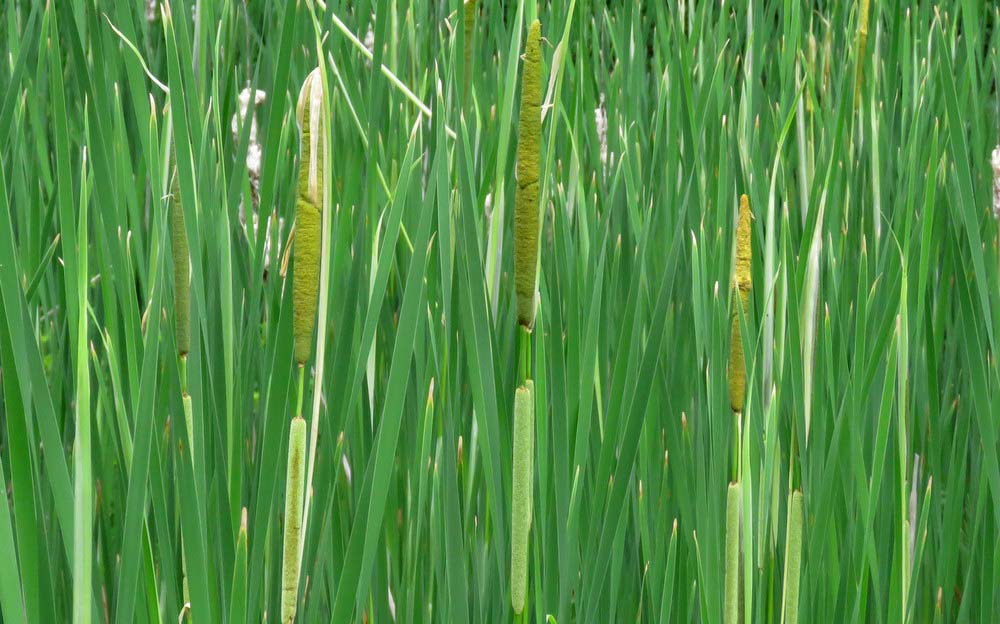
CORMS, SHOOTS AND SPIKES
If you every find your self in any sort of survival situation, whether self-imposed or not, one of the first plants a person should seek out is the cattail.
As a food plant, cattails are outstanding and offer a variety of food products according to the season. In early spring, dig up the roots to locate the small pointed shoots called corms. These can be removed, peeled, and eaten, added to other spring greens for a salad, or cooked in stews or alone as a herb pot. As the plant growth progresses to where the shoots reach a height of two to three feet above the water, peel and eat like the corms, or sautee. This food product is also known as “Cossack Asparagus” due to the Russians’ fondness for it.
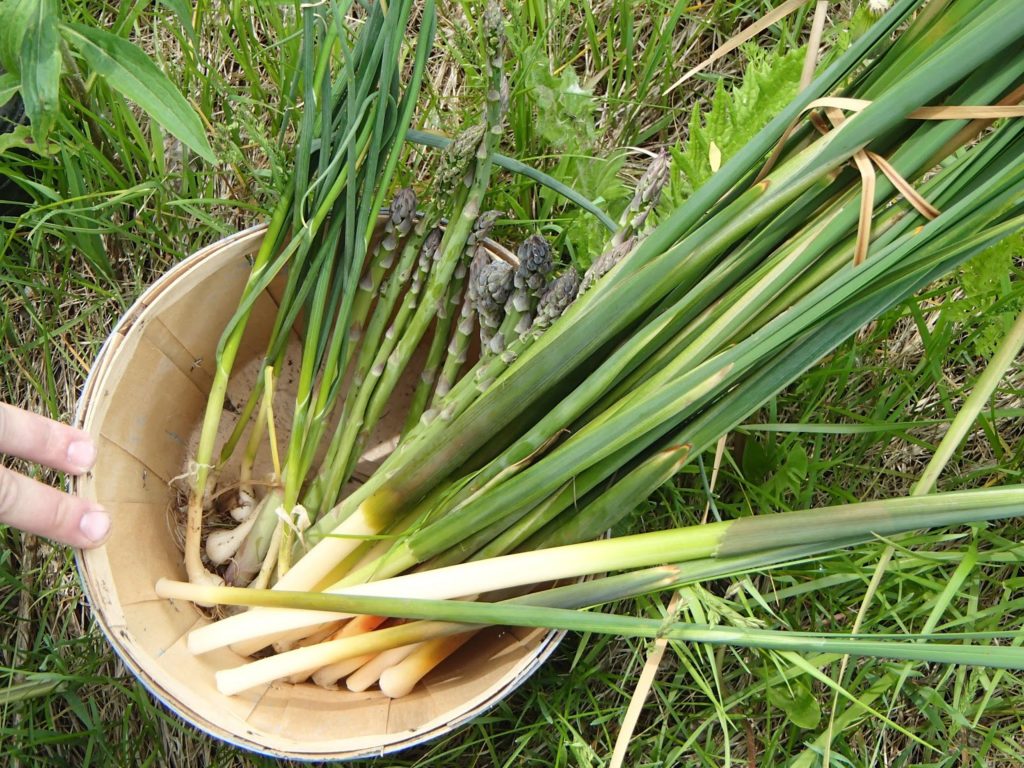
In late spring to early summer, some of the best cattail foraging can be made. Soon after these shoots become available, the green female bloom spikes and the male pollen spikes begin to emerge. These spikes can be found in the center of the plant and form a cylindrical projection that can only be detected when you’re close to the plant.
Peel back the leaves in the same way you would shuck corn, and both the male portion above and the female below can be seen. The female portion will later develop into the familiar brown “cattail” seed head from which the plant’s name is derived. The male portion will atrophy into a small dried twig that may easily break off the top of the seed head. Both the male and female pollen spikes can be boiled and eaten like corn on the cob, and both are delicious. The male portion provides a bigger meal at this stage. They have a flavor that is corn-like, but distinct from corn. I haven’t found anyone yet who doesn’t enjoy them. Both may also be eaten raw.
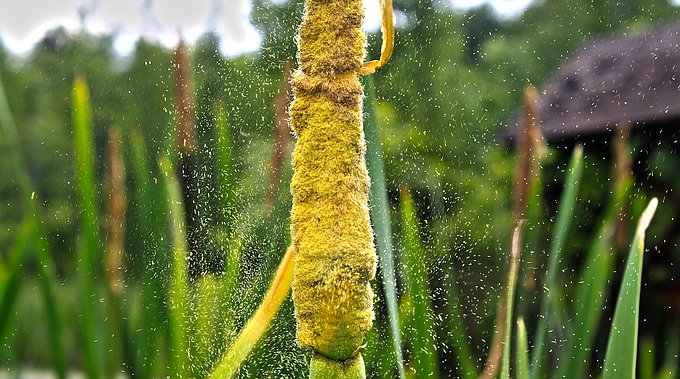
POLLEN
In late summer the male pollen head will begin to develop an abundance of yellow pollen with a talcum powder consistency that can easily be gathered. The best way I have found so far to collect the pollen without most of it ending up on my hands is to take a plastic bag and a pair of scissors, carefully bend the flower into the bag, and cut it off. Collect as many pollen-loaded flower heads as you can. Take them home, and let them sit undisturbed for a day. Then carefully shake them out inside the bag. This method yields far more pollen than trying to shake out the pollen in the field. Several pounds of this can be collected in less than an hour.
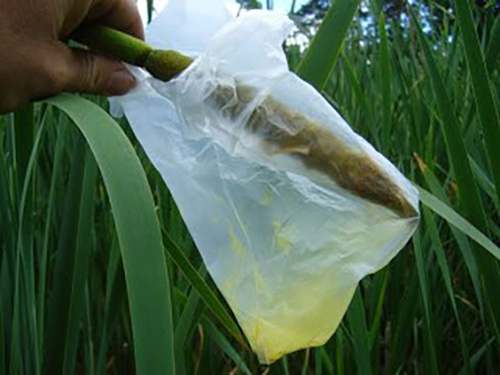
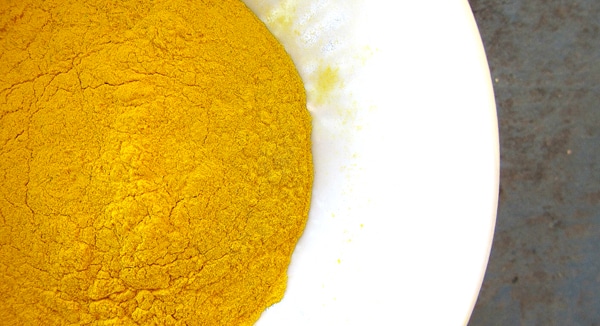
Next run the pollen through a fine sieve to remove leaves, fluff, and bugs. Yes, bugs! Remember that bugs on a plant are a good thing; they indicate it hasn’t been sprayed with a pesticide!
The traditional use of this pollen is to substitute for some the flour in pancakes to make cattail pancakes. This also works well with cornbread. Other uses of the pollen include thickeners or flour extenders for breads, cakes, etc.
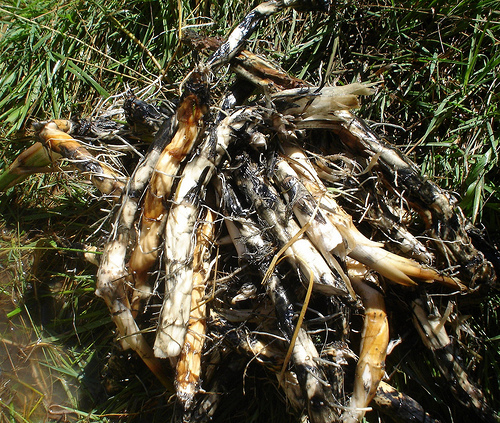
ROOT STARCHES
The most abundant food product, the root starch, may be harvested year round. It is so abundant, a study was conducted at the Cattail Research Center of Syracuse University’s Department of Plant Sciences. The chief investigator of the project was Leland Marsh. The reported results were as follows:
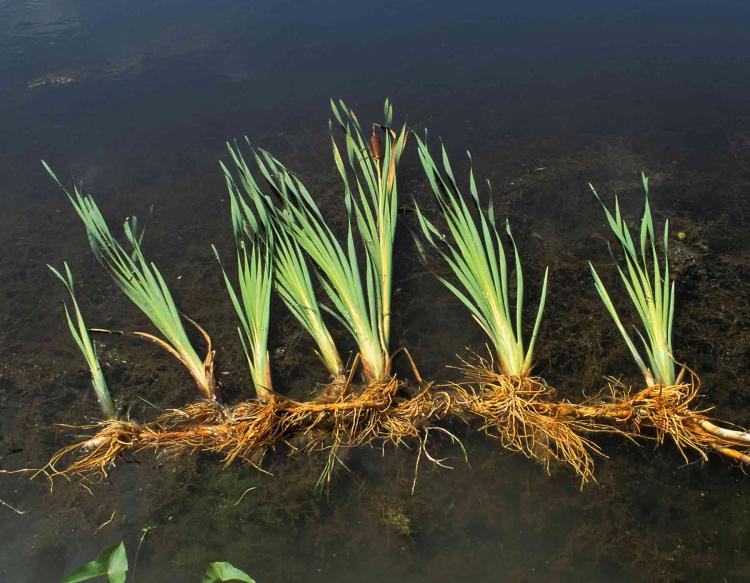
Yields are fantastic. Marsh discovered he could harvest 140 tons of rhizomes per acre near Wolcott, NY. That represents something more than 10 times the average yield per acre of potatoes. In terms of dry weight of cattail flour, the 140 tons of roots would yield approximately 32 tons.
To extract the flour or starch from the cattail root, simply collect the roots, wash, and peel them. Next, break up the roots under water with your fingers. The flour will begin to separate from the fibers. Continue this process until the fibers are all separated and the sweet flour is removed. Remove the fiber and pour off the excess water.
Allow the remaining flour slurry to dry by placing near a fire or using the sun.
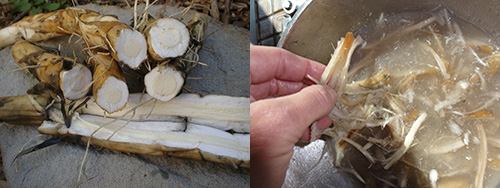
Cattail root flour also contains gluten. Gluten is the constituent in wheat flour that allows flour to rise in yeast breads. The Iroquois Indians macerated and boiled the roots to produce a fine syrup, which they used in a corn meal pudding and to sweeten other dishes. Some Indians burned the mature brown seed heads to extract the small seeds from the fluff, which was used to make gruels and added to soups.
MEDICINAL AND OTHER USES
The jelly that grows between young leaves can be used for wounds, boils and infected flesh. This treatment also relieves pain. This honey-looking product has strong antiseptic properties, which made cattail an indispensable part of the first aid kit on the American frontier for centuries. People living along cattail’s marshy shores still rely on it for treating everything from toothaches to spider bites.
The ash of the burned cattail leaves can be used as an antiseptic or styptic for wounds. A small drop of a honey-like excretion, often found near the base of the plant, can be used as an antiseptic for small wounds and toothaches.
The utility of this cattail is limited only by your imagination. The dried stalks can be used for hand drills and arrow shafts. The seed heads and dried leaves can be used as tinder. The seed head fluff can be used for pillow and bedding stuffing or as a down-like insulation in clothing. The leaves can be used for construction of shelters or for woven seats and backs of chairs, which has been a traditional use for hundreds of years.
They can be woven into baskets, hats, mats, and beds. The dried seed heads attached to their stalks can be dipped into melted animal fat or oil and used as torches.
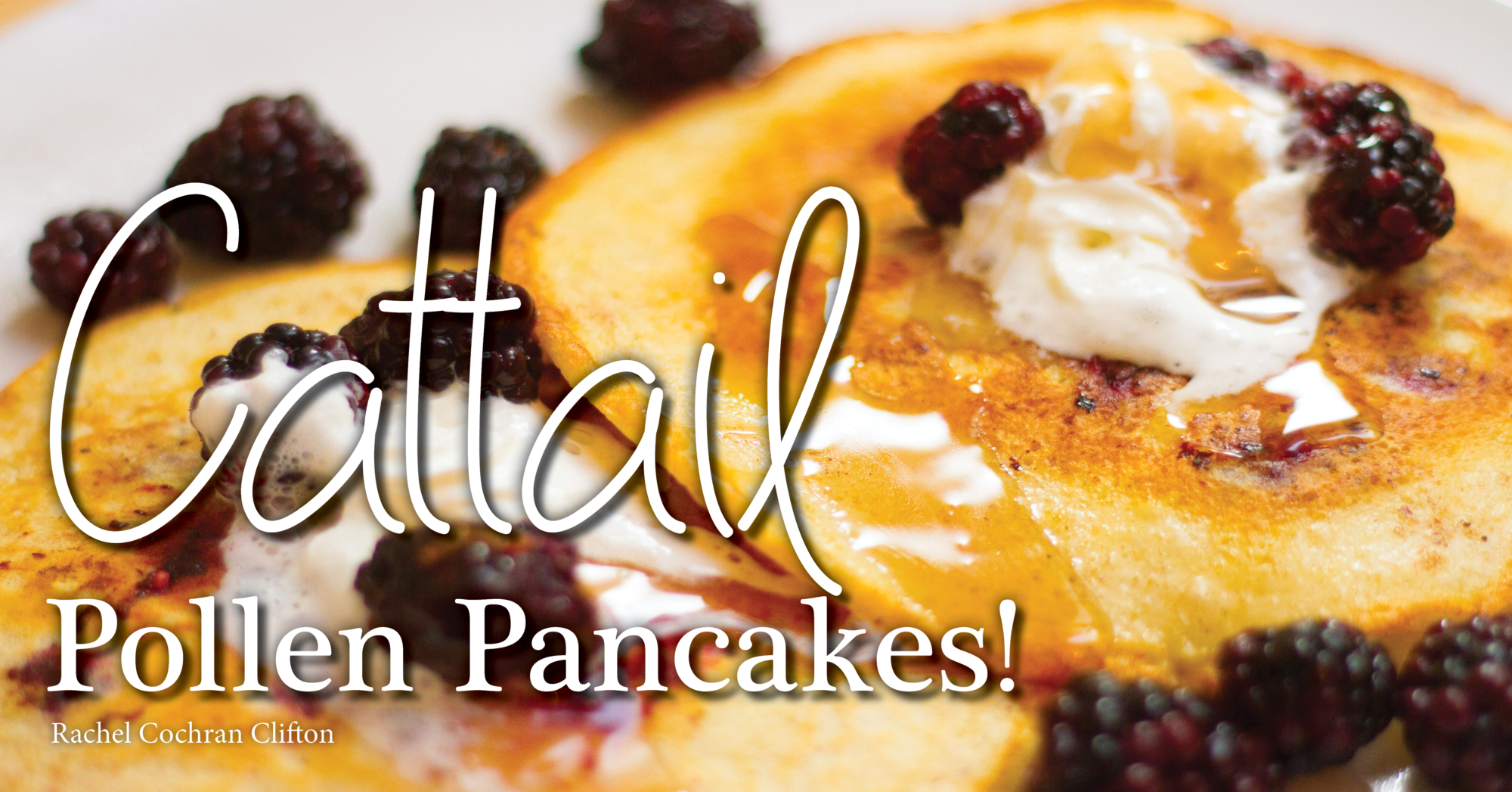
Mix dry ingredients, then add milk and melted butter. Mix only until moistened.
Heat griddle or pan until water drops sizzle. Add a generous pad of butter and pour batter on the hot griddle.
Turn pancakes when they are full of bubbles and begin to set around the edges.
Serve with a pad of butter and a drizzle of honey or your favorite maple syrup, I love mine with a nice dollop of blackberry jam and some whipped cream!
Ingredients
Directions
Mix dry ingredients, then add milk and melted butter. Mix only until moistened.
Heat griddle or pan until water drops sizzle. Add a generous pad of butter and pour batter on the hot griddle.
Turn pancakes when they are full of bubbles and begin to set around the edges.
Serve with a pad of butter and a drizzle of honey or your favorite maple syrup, I love mine with a nice dollop of blackberry jam and some whipped cream!

